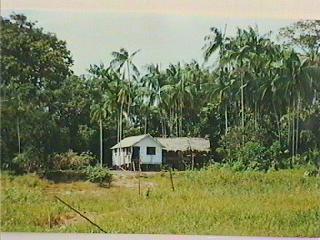
| This is the house we visited on the bank of the river-lake. It had 3 generations of rubber farmers. Now they make some money telling tourists what it was like. Hans had a great time talking to them about what it was like half a century ago in the rubber boom times and asking what it was like where we came from. |  |
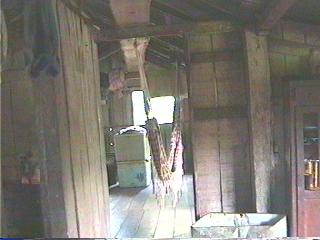 |
The inside of the house like most of the places we saw in the jungle were filled with the absolute bare minimum. 2-3 total rooms, with hardly a wall between them. A hamoc to sleep up off the floor (a good idea), pots, pans, dishes, toiletries, etc., - minimal clothing, some tools and that's about it. The most personal possesions were usually some pictures on the wall. |
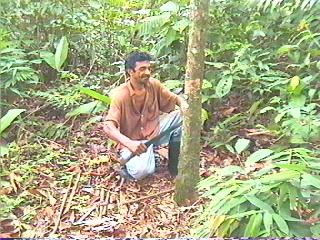 |
The rubber boom in the early 1900's created an abundant wealth for the Amazon area, until the rubber seeds were smuggled to Asia.There since it was new very large and organized platations were set up that reduced the cost of production - essentially wipping out the Amazon trade in rubber. |
| This 80 year old man has been farming rubber strees for 65 years. He was very proud to show us how he carved the tree in parallel streams to cause the rubber to flow into a tin cup to capture the pure latex. | 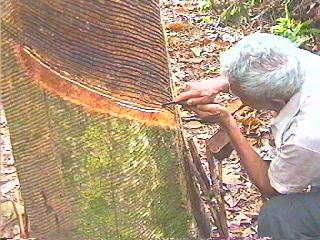 |
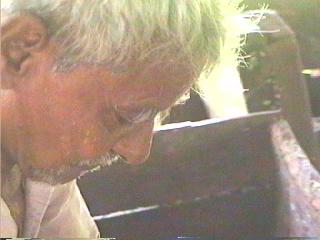 |
He seemed quite heathly and happy. He's a widow now, but he has had tree wives, the first one died when she was 15 years of age. He and another older man we talked to in the area have nearly a dozen children from several "wives". |
| 2 liters of pure latex rubber sells for $2.50. It might take the rubber farmers a week of labor, carving each tree, to produce this amount. They sell it for special lab orders in Manaus, along with fish they might catch during the week of travel. They also carve out canoes for money. A heavy wood canoe can cost $100. When we arrived there were several canoes underwater. He says people store their canoes by sinking them (take out a plug) so the wood doesn't dry. How could it in this humidity! | 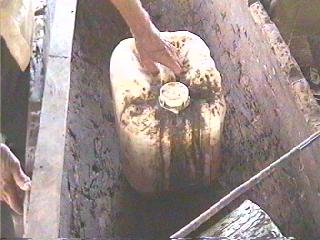 |